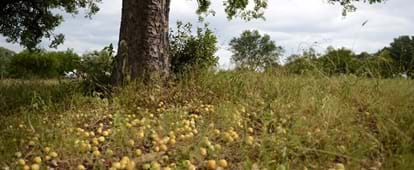By creating an account, I agree to the
Terms of service and Privacy policy
Choose your country and language:
Africa
Americas
Asia Pacific
Europe
TThe Rixile Culture to Kruger Route is a meander between the Kruger National Park, Phalaborwa and Giyani in Limpopo province. Essentially, it links wildlife to parts of South Africa’s most intriguing ancient history.
Phalaborwa, which is the only town with a gate into the Kruger National Park, is usually glossed over in tourism brochures, simply because it is mostly a mining town.
But its famous open-cast mine, 2km wide, is an attraction in its own right. This is where a series of volcanic eruptions 2-billion years ago brought minerals to the surface, including phosphates, mica, gold, copper zirconium and vermiculite.
Here, and at the Masorini heritage site within the Kruger National Park, the ancestors of the Ba-Phalaborwa people first worked with iron and copper 1 200 years ago. Smelting iron was seen as a mystical process, with many rituals and taboos.
The other famous attraction around Phalaborwa is the Hans Merensky Golf Estate, very close to the national park boundary. So close, in fact, that wild animals like impala and giraffe regularly wander across the fairways, and water hazards truly demand respect: sometimes they contain crocodiles.

FFurther towards rural Giyani, the land is ruled by three signature trees – baobabs, marulas and mopanes. The baobabs are giants of the earth, and are odd in many ways – they are also known as the 'upside-down tree', are regarded as giant succulents, and can attain their enormous girth over thousands of years.
Their fruits have a tart, refreshing taste, but it is the fruits of the marula tree that are really revered in this region.
Marulas are distantly related to the mango family, and their small, yellow fruits are coveted by humans and elephants. They are used to make South Africa’s famous Amarula liqueur. But marula jelly and jam are also delicious.
Marulas are tall, spreading trees, quite unlike the scrubby mopane trees. But the latter are home to another indigenous food source – mopane worms. Prepared well, they are delicious.
TTravel tips & planning info
Who to contact
Open Africa
Tel: +27 (0)21 683 9639
Email: admin@openafrica.org
Best time to visit
Winters (May to August) and the shoulder seasons of spring (September and October) and autumn (March and April) are generally very pleasant. Summers (November to March) can be very hot during the day, but this is the time for migrant birds and to see spectacular thunderclouds.
Things to do
If you’re interested in birding, you may want to tick off a lifer. There is a small colony of endangered taita falcons around the JG Strijdom tunnel on the way to Hoedspruit, but you’ll need a guide to see them. Michael Kumako can be contacted via the Kruger National Park on +27(0)21 424 1037.
The Open Africa website lists safari tours and even river cruises, as well as cultural activities like dances and local music.
What to pack
If you’re a birder, bring along binoculars and a bird book. For the rest, normal safari gear is advised: light long-sleeved shirts and pants, comfortable walking shoes, and a good hat.
Where to stay
Open Africa Routes lists a number of cultural home stays in Giyani, or you could opt for a guest house in the wildlife-rich surrounds between Phalaborwa and Kruger National Park.
What to eat
Since you’re in the land of the marula fruit, be sure to sample the famous Amarula liqueur – in cake, milkshakes, coffee and cocktails. If you’re brave, try mopane worms. They taste better than you’d imagine.
Related links

